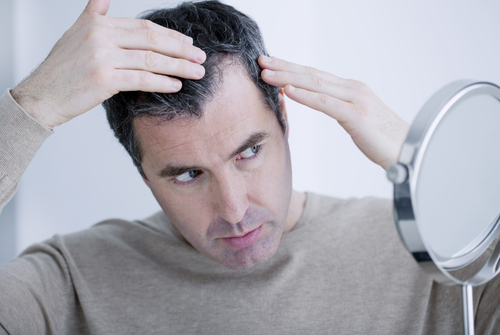DIAGNOSIS
Family history will often tell the doctor what type of alopecia a person has. Occasionally, a biopsy may be necessary to determine the type of hair loss. Looking at plucked hairs under a microscope can help to tell the difference between alopecia areata and androgenic alopecia. Other tests might be done to check for autoimmune diseases like lupus that can accompany alopecia.
RECOMMENDED MEDICATIONS
Medications are available that encourage regrowth of hair. These medications, such as minoxidil and finasteride, are not appropriate for everyone with hair loss. Hair growth medications work to varying degrees in different people, and only trigger complete regrowth in a minority of individuals. They work best for people who have smaller amounts of hair loss. Hair loss returns if you stop taking the medication. Finasteride is not appropriate for women.
Corticosteroids are another type of medication that may be used for some types of hair loss. Less severe cases of alopecia areata are sometimes treated with corticosteroids injected into the affected area. Systemic (pill-form) corticosteroids have long-term side effects and are reserved for more severe cases.
Another treatment for unresponsive alopecia areata is to deliberately provoke an allergic reaction (contact dermatitis) with a chemical applied to the scalp. A rash develops, and hair often grows back in the same spot a few months later. It can be uncomfortable, though.
Some people with hair loss have slightly low iron or zinc levels and may benefit from iron and zinc supplements.
For severe alopecia of any type, medication may improve the condition, but not cure it. The remaining options are to undergo surgery or wear a wig or hairpiece. The other option is to learn to live with the condition and not pursue medical options.
Surgery usually means a hair transplant. Small plugs of scalp, each with two or three hairs attached, are taken from areas of thick hair, and planted in the affected part of the scalp. Fewer hairs per square inch are needed for people with wavy or curly hair, or people whose hair and skin colours match.
Unfortunately, further hair loss can ruin any transplant, and leave you without enough donor hairs. The least successful candidates for transplant are men in their 20s who are balding fast. Such men, especially those whose fathers were or are bald by the age of 55 years, should know that a very expensive transplant won’t last forever.
Although wigs may not sound like the best option, they often are. Good quality modern hairpieces can be undetectable (though expensive). Many grip by vacuum and won’t fall off – even during contact sports.


